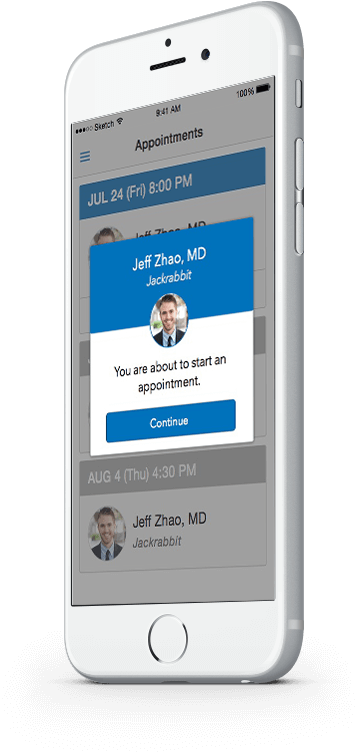Care for Your Patients and Yourself
Between the shortage of physicians, the increasingly complex reimbursement landscape, and the demands of running a business, it is no wonder that today’s medical professionals are feeling stressed and strained. Fortunately, telemedicine offers an alternative that can ease the burden on providers without sacrificing quality care for patients.
See More Patients in Less Time
Because there are fewer required steps involved, providers are able to conduct visits via video in less time than traditional office visits. This allows medical professionals to either cut back their office hours, or increase their revenue without sacrificing personal time.
Skip the Commute
Work is a thing you do, not necessarily a place you go. Some medical professionals find that they can conduct all visits remotely one or more days a week, eliminating the wasted time and expense of a commute.

Enjoy Flexible Hours
Telemedicine enables visits outside of normal office hours, giving patients more flexibility and allowing medical professionals to craft a schedule that fits in with their lifestyle.
Take a Vacation
You can conduct telemedicine visits from anywhere with an internet connection, so feel free to take that vacation even if you are working on a complex case. If necessary, you can see your patient without interfering with your travel plans.
Telemedicine Benefits for Medical Professionals
Telemedicine is a convenient and efficient way to serve patients while increasing flexibility for providers. Specifically, the use of real-time, synchronous audio/video communication, commonly referred to as video-visits, enables these types of interactions to be done remotely, without the patient or provider having to come into the office.
Provide Excellent Care from Anywhere
Video-visits are face to face, real-time interactions between providers and patients. All of the non-verbal communication that is lost on the phone is captured in these visits.
Telemedicine is ideal for the following types of care:
- Chronic condition management
- Medication adjustments
- Reviewing abnormal labs or imaging
- Minor urgent care
- Postoperative follow-up
- Lifestyle coaching
The use of telemedicine has been shown to improve health outcomes because it makes it easy for patients to comply with follow-up instructions, reduces missed appointments, and strengthens the doctor-patient relationship.

Increase Practice Revenue Without Working More Hours
Offering telemedicine for certain types of cases is a great way to increase practice revenue. By replacing some in-office visits with reimbursable video-visits, providers can increase the number of patients seen by the practice without adding staff or working longer hours.
It’s easy to add additional appointments early in the morning, at the end of the day, or over the lunch hour, without increasing overhead. Providers who follow-up with telemedicine can see an additional one or two patients per day from their office or home without stressing office resources.
Finding the right platform
When researching telemedicine platforms, providers should consider a few things very carefully. First, some platforms represent a major disruption to the practice’s existing workflow. Chiron Health integrates seamlessly into existing EMRs, so appointments can be scheduled and documented exactly as they normally are.
Second, reimbursement for these appointments is critical. About half the states in the country require private insurance to cover video-visits at comparable rates to in-person visits. However, there are many nuances and exceptions to these regulations. Chiron Health does a telemedicine specific insurance eligibility check for every patient seen over video visit to ensure that our clients are billing insurance compliantly.
Finally, it is a reality that some patients will have difficulty connecting to video appointments. Chiron Health provides live support for every appointment to make sure patients successfully connect, and the provider never has to act as tech support.
